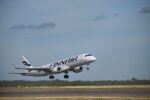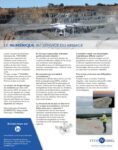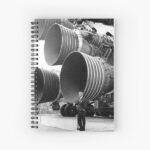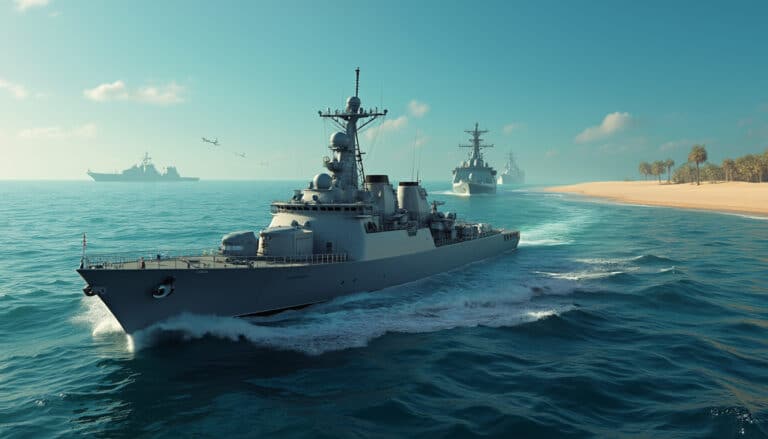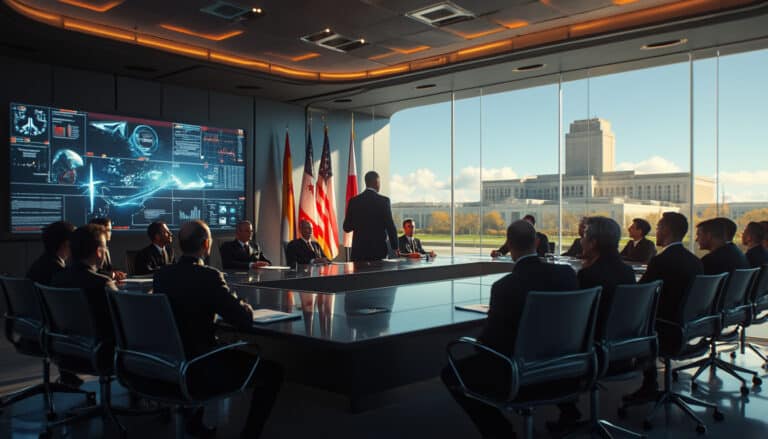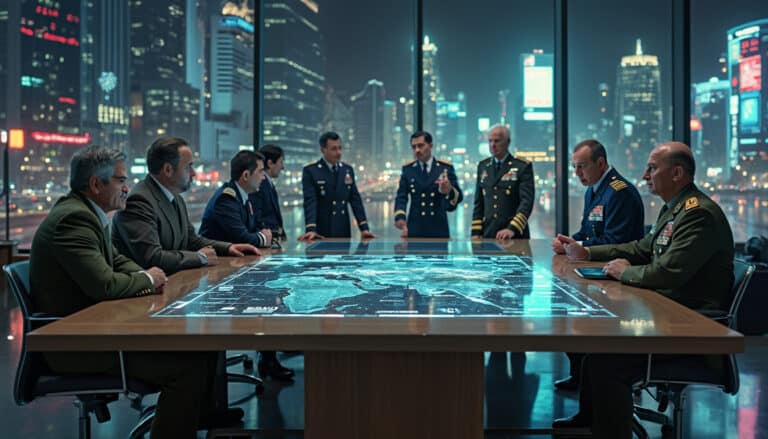“`html
The U.S. Air Force is going through an unprecedented period of turbulence. With an aging fleet, operational performance is markedly declining. In 2024, only 62% of aircraft were ready to accomplish their missions, a historically low rate. This decline highlights major challenges facing the service.
While the Air Force’s fleet consists of over 5,000 aircraft, many remain grounded, unable to participate in daily missions. This situation is exacerbated by the aging of aircraft, some dating back several decades, such as the B-52 Stratofortress and the C-5 Galaxy. Statistics from Defense News reveal that nearly 1,900 aircraft are out of service at any given time, severely affecting overall operational capability.
Experts, such as Heather Penney from the Mitchell Institute for Aerospace Studies, emphasize that these numbers are just the tip of the iceberg. “Operational readiness is often a lagging indicator, and current rates do not even reflect the true state of our air resources,” she explains. Furthermore, the challenges are not limited to maintenance; reliability failures and shortages of spare parts further complicate the situation.
The F-35A Joint Strike Fighter, a pillar of the fighter fleet, perfectly illustrates these difficulties. With a readiness rate dropping to 51.5% in 2024, the F-35A is far from meeting the established performance objectives. Delays in modernization and logistical issues, such as a lack of spare parts and inadequate training for maintenance personnel, hinder the improvement of these mission rates.
In the face of these challenges, military officials must navigate between difficult strategic choices, prioritizing immediate operational missions at the expense of long-term training and maintenance. This approach has direct repercussions on essential units such as U.S. Air Forces Central Command, which depend heavily on their ability to maintain an effective air presence in the Middle East.
Gen. David Allvin, the Chief of Staff of the Air Force, recently warned about the consequences of this declining readiness. At the AFA Warfare Symposium, he stressed the urgent need to enhance maintenance and modernize the fleet to preserve American air superiority. Without significant interventions, the future of the fleet could be compromised, jeopardizing the United States’ ability to project its air power globally.
Meanwhile, private initiatives, such as those by Lockheed Martin aimed at improving the reliability of the F-35, struggle to keep pace with growing needs. Chauncey McIntosh, Vice President of Lockheed, stated that the company is working closely with the F-35 Joint Program Office to address performance issues but acknowledges that the task remains challenging.
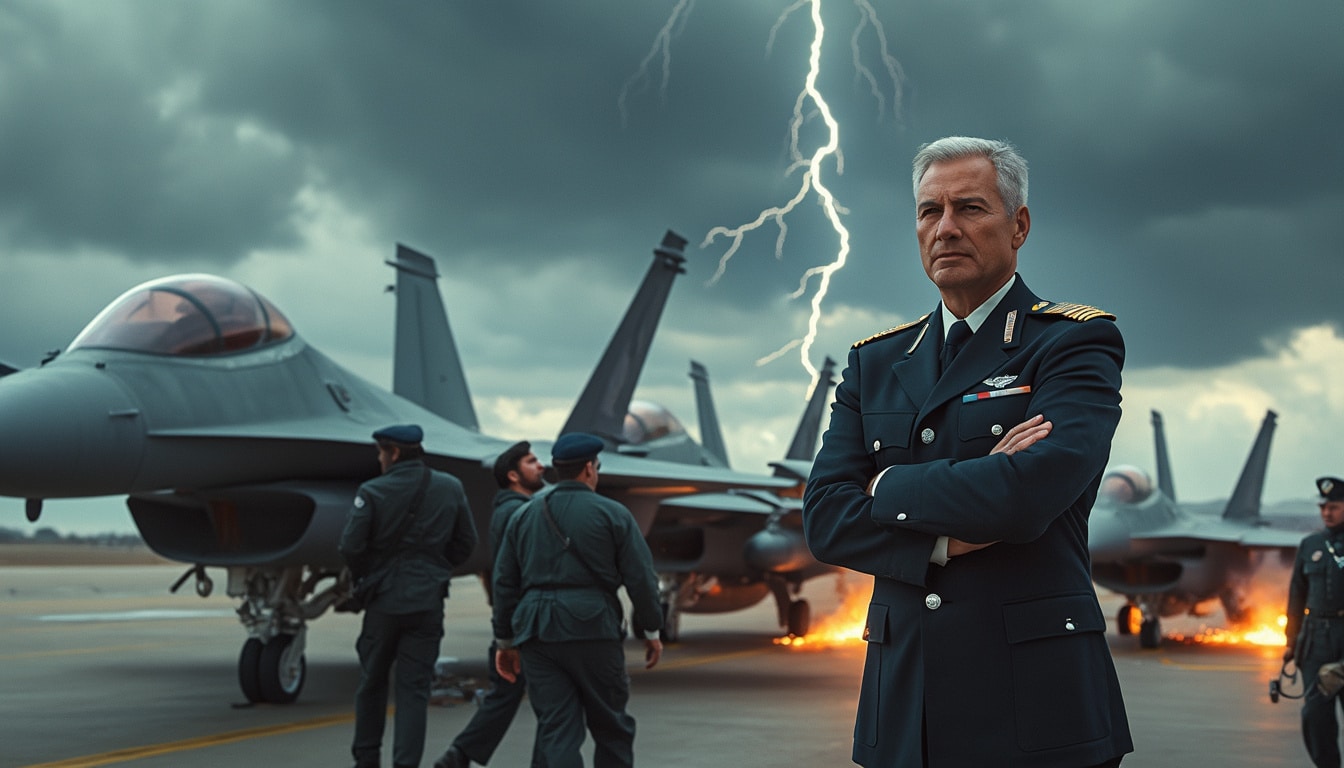
Table des matières
ToggleWhat is the current state of air force aircraft readiness?
The readiness of Air Force aircraft has reached an alarming level, raising serious concerns within military high command. According to a recent analysis by Defense News, only 62% of the fleet’s aircraft are operational on average, marking the availability rate the lowest in years. This figure reflects a troubling reality: out of a fleet of over 5,000 aircraft, approximately 1,900 are consistently out of service, significantly limiting the operational capabilities of the Air Force.
What are the causes of the decline in aircraft availability?
Several factors contribute to this decrease in availability. First, the majority of operational aircraft are old, some dating back several decades. For example, the B-52 Stratofortress and the KC-135 Stratotanker, in service since the Vietnam War, represent a significant part of the fleet. The lack of sufficient modernization leads to increased wear and frequent failures, forcing technicians to resort to temporary solutions such as custom fabrication of spare parts.
Secondly, the shortage of qualified personnel is another major issue. Training programs have not kept pace with the necessary demands to offset the retirement of experienced technicians. This directly impacts the ability to maintain and repair aircraft, making it even more difficult to keep the planes mission-ready.
Finally, budget constraints play a crucial role. Recent budget cuts have limited the investments needed to renew the fleet and improve maintenance infrastructures. These financial restrictions complicate the implementation of essential reforms to rectify the situation.
What is the impact on the Air Force’s missions?
The decrease in aircraft availability significantly affects the operational missions of the Air Force. With fewer aircraft mission-ready, the ability to respond quickly to emergencies is greatly reduced. Units deployed abroad, such as those from the U.S. Air Forces Central Command, find themselves on the front line, needing to optimize the use of available aircraft to maintain operations in conflict zones.
This situation also leads to strict prioritization of missions, where combat operations often take precedence over training or relief missions. Consequently, units stationed on U.S. territory face greater material shortages, limiting their effectiveness and responsiveness when needed.
Moreover, the decrease in availability of aircraft such as the F-35A or the A-10 Warthog compromises defense and attack strategies, making the Air Force less flexible in the face of emerging threats. This situation could also affect the international credibility of the military, raising questions about its capacity to effectively defend national interests.
What do experts say about this situation?
Experts share a grim outlook on the current situation. Heather Penney, a former F-16 pilot and principal researcher at the Mitchell Institute for Aerospace Studies, emphasizes that the readiness of aircraft is “often a lagging indicator.” She adds that the current mission-capable rates of aircraft do not even reflect the severity of the current problems, predicting further deterioration in 2025.
Additionally, the Air Force’s Chief General, Gen. David Allvin, stated at the Air and Space Association’s Warfare Symposium that Air Force dominance risks being compromised if corrective measures are not implemented soon. He praised the hard work of technicians while acknowledging that “we are eating into the margin we had.”
Furthermore, Chauncey McIntosh, Vice President of Lockheed Martin for the F-35 program, stated that his company is focused on improving the reliability of the aircraft by addressing the remaining “degraders” and ensuring that repair depots have the necessary parts. However, he remains optimistic about the ability to rectify the situation with adequate support from the relevant authorities.
What solutions are being considered to improve the situation?
In light of this crisis, several solutions are being considered to rectify the situation. First, it is crucial to invest in the modernization of the air fleet. Gradually replacing older aircraft with newer, technologically advanced models would not only improve the availability of the aircraft but also reduce long-term maintenance costs.
Next, strengthening the training and recruitment of qualified technicians is essential. By developing specialized training programs, the Air Force could fill the gap of qualified personnel and ensure effective maintenance of the aircraft.
Moreover, optimizing budgets and resources is essential. Better allocation of available funds would allow for prioritizing critical investments, such as purchasing spare parts and upgrading maintenance facilities. Initiatives similar to those planned by countries like the Netherlands, which plan billions of dollars in military aid, could serve as a model for effective resource restructuring.
Finally, technological innovation plays a key role in resolving current issues. The integration of advanced technologies, such as artificial intelligence and the Internet of Things, can improve predictive maintenance systems, enabling proactive management of failures and increasing the reliability of the aircraft. Initiatives like preparation through space technology demonstrate the immense potential of these technologies to transform military operations and enhance overall efficiency.
What would be the advantages of a modernized air fleet?
Modernizing the air fleet would offer numerous advantages for the Air Force. First, a more modern and technologically advanced fleet would significantly increase the availability rate of aircraft, thereby ensuring better responsiveness and greater operational efficiency. Newer aircraft require less costly maintenance and benefit from better safety and reliability performance.
Moreover, a modernized fleet would integrate defense systems and cutting-edge technologies, further enhancing the Air Force’s ability to respond to contemporary threats. For example, next-generation jets like the F-35A offer stealth capabilities and advanced communication systems, essential for carrying out complex missions in hostile environments.
In addition, a modernized fleet would have a positive impact on the morale and productivity of military personnel. Knowing that the equipment they depend on is reliable and high-performing enhances the confidence and motivation of pilots and technicians. This translates into better overall unit performance and an increased ability to complete assigned missions.
Finally, a modern air fleet would contribute to national security by ensuring a constant and effective air presence. It would allow the Air Force to maintain its air superiority, thereby deterring potential adversaries and ensuring regional peace and stability.
How do budget policies affect aircraft readiness?
Budget policies play a determining role in the Air Force’s ability to maintain and modernize its fleet. An adequate budget allows for funding maintenance operations, purchasing spare parts, and modernizing aircraft programs. Conversely, budget cuts can lead to delays in maintenance programs, a reduction of maintenance personnel, and accelerated obsolescence of equipment.
For example, recent budgets have failed to meet the foresight goals set by former military leaders, such as the availability rate of 80% for key aircraft like the F-16, F-22, and F-35. This illustrates how budgetary decisions can have a direct impact on the efficiency and readiness of the air fleet.
Furthermore, inefficient budget management can exacerbate existing maintenance and availability issues. Without sufficient funding for modernization and training programs, the Air Force continues to rely on aging technologies and temporary solutions to maintain its aircraft in a mission-ready state.
However, well-targeted budget initiatives can bring about significant improvements. Investments in strategic areas such as space technology or advanced maintenance systems can radically transform the operational capabilities of the Air Force. For example, countries like the Netherlands are investing heavily in the space sector, an approach that could serve as a model for the Air Force in seeking a sustainable improvement of its fleet.
What is the importance of training and recruitment in this context?
Training and recruitment are crucial elements to ensure the readiness and maintenance of the air fleet. With the increasing age of aircraft, it is imperative to have a team of highly skilled technicians capable of managing the technical complexities of modern maintenance. Efforts should focus on developing specialized training programs to attract new talent and enhance the skills of existing personnel.
Moreover, initiatives aimed at retaining experienced technicians are essential to maintain a high level of expertise within the Air Force. Strategies such as improving working conditions, offering attractive career prospects, and financial incentives can help reduce personnel turnover and retain critical skills necessary for the proper functioning of the fleet.
Additionally, innovation in training methods, such as the use of virtual reality and simulation, can enhance the effectiveness of training programs and ensure that technicians are well-prepared to face current and future technical challenges. These technologies allow for immersive and hands-on training, essential for familiarizing technicians with new technologies and advanced maintenance procedures.
Finally, collaboration with academic institutions and private companies can reinforce training capabilities and provide additional resources for skill development. Strategic partnerships can facilitate access to cutting-edge technologies and research and development programs, thus contributing to better preparedness of personnel.
What lessons can be learned from international initiatives to resolve this crisis?
International initiatives offer valuable lessons for the Air Force in its quest for crisis resolution. The recent commitment of the Netherlands to provide significant military aid to Ukraine demonstrates the importance of alliances and international collaborations to enhance military capabilities. This cooperation allows for sharing resources, advanced technologies, and best practices in aircraft maintenance and readiness.
Moreover, the experience gained by other nations in modernizing their fleets can serve as a model for the Air Force. Countries like the United States or Israel have established successful modernization programs by investing in cutting-edge technologies and developing effective public-private partnerships.
Furthermore, learning from past mistakes and adapting strategies according to specific contexts is essential. For instance, the challenges faced by the F-35A program regarding reliability and availability have provided crucial lessons on the importance of careful planning and effective management of complex projects.
Finally, integrating space technology into military operations, as demonstrated by the initiatives mentioned in certain recent projects, can offer innovative solutions to improve aircraft readiness and resilience. Advanced surveillance systems, predictive maintenance, and enhanced communication capabilities are elements that can be optimized through technological advancements.
How can space technology transform aircraft readiness?
Space technology plays an increasingly crucial role in the readiness and maintenance of military aircraft. Thanks to advancements in this field, the Air Force can benefit from sophisticated surveillance systems, predictive maintenance, and advanced communication technologies. For example, satellites can provide real-time data on the condition of aircraft, thereby allowing for proactive maintenance before problems become critical.
Moreover, the use of artificial intelligence and machine learning algorithms allows for analyzing vast amounts of data generated by the aircraft’s onboard systems. This facilitates the identification of trends and anomalies, enabling quick and effective intervention by maintenance teams. These technologies not only enhance the reliability of the aircraft but also reduce the necessary downtime for repairs.
Additionally, augmented and virtual reality, combined with space technology, offer new possibilities for training technicians. These tools provide immersive and interactive training, enhancing maintenance personnel’s skills more effectively and engagingly than traditional methods.
Furthermore, technological advancements in the space field can also improve logistics and spare parts management. Automated inventory management systems, based on satellite data, can optimize stock levels and ensure that necessary parts are available on time, thus avoiding delays in the maintenance and repair of aircraft.






